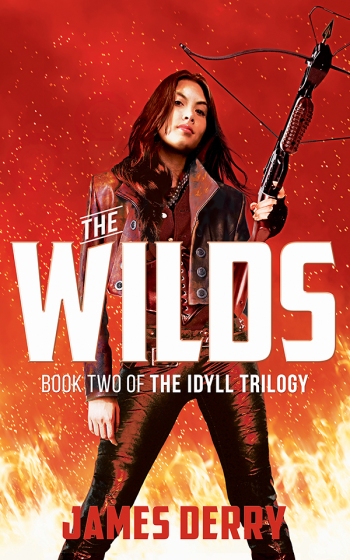What is it lately with all the apocalypses? Everywhere you look in pop culture, someone’s trying to survive one. There’s your garden-variety plague apocalypses (Station Eleven). There’s your zombie plague apocalypses (Walking Dead, World War Z). Comedic apocalypes (Last Man on Earth). A capital-A Apocalypse (the villain from the upcoming X-Men movie). HBO apocalypses (The Left overs), celestial apocalypses (SevenEves), and apocalypse remakes (Fury Road).
Why are we so obsessed with the world ending? There’s a theory out there that says that the post-apocalyptic genre taps into a deep desire to return to our primal roots—and not necessarily in a good way. If the society’s infrastructure crumbles, then all social conventions go out the window. And then its totally acceptable to kill strangers. In fact, in the case of a zombie plague, it’s downright pragmatic.
I’m not sure I’m ready to go that far, that all post-apocalyptic stories are excuses for us to vicariously satisfy our bloodlust Besides, I think we’re probably just as bloodthirsty now as we were twenty or thirty years ago. So why are post-apocalyptic so overwhelmingly popular now? Why is Kansas’ governor officially declaring October zombie preparedness month? Why are Zombie Runs and Zombie Paintball so popular? Why is ‘Doomsday Preppers’ a thing?
It’s not hard to figure out why movies in the 1950s featured atomic monsters like Godzilla or Them!. (Not ‘them,’ ‘Them!’) Back then, nations were legitimately scared of being wiped off the map by nuclear war. Compared to the real fear of a nuclear holocaust, ‘It Came From Beneath the Sea,’ or ’The Giant Gila Monster’ seem downright cozy.
So what’s zinging our zeitgeist in 2015?
How about the fact that we’re just too damn connected? Facebook, Skype, texts, emails, tweets, photo streams… We are inundated with enough messages and info to choke the most robust of data plans. Thank goodness for those of us with phone phobia, the only means of communication that seems to be going extinct are actual phone calls. Still, it’s becoming a bit alienating as constant contact replaces human contact.
For many Millennials, who have grown up in a world of Google searches, push notifications, Netflix queues, and geofencing, the idea of all those connections suddenly ceasing probably seems equally fascinating and horrifying.
So what are we going to do about it? Move into a solar/wind powered cabin, somewhere off the grid? Actually it would be far easier to download The Dog Stars to our phone and visit the post-apocalypse whenever we like—in short escapist bursts—between checking Tinder.
PS: I guess I should complain about the ubiquity of post-apocalyptic stories, since I just contributed to the genre myself. (Try Idyll for an apocalypse on another planet!)
PPS: I just finished Peter Heller’s ‘The Dog Stars,’ so I’m hoping to write a review in about a week.
 Walt and Samuel Starboard. Miriam and Virginia Bridge. Four travelers entered the mysterious City-Ship of Marathon, but only three made it out.
Walt and Samuel Starboard. Miriam and Virginia Bridge. Four travelers entered the mysterious City-Ship of Marathon, but only three made it out.
